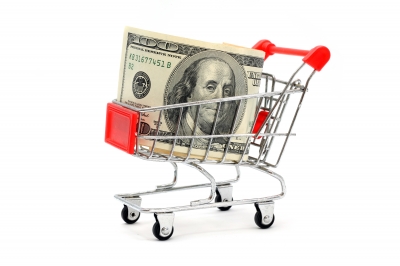Secrets to Brand Growth in the U.S.: Test to Find a Cure for the Promotion Addiction

This continues the exploration we began in the prior post, for the means to make our mature brands begin to grow substantially again in the U.S., not just in developing nations. We are somewhat focused on CPG where these problems peak, although whatever brand you are selling, these posts will have relevancy.
When supermarket scanners came, CEOs received reports that sales spikes could be caused by price promotion, which was used only occasionally, as this marketing category at the time accounted for only 25% of the marketing budget, the rest being advertising. CEOs were also taught that advertising, the mainstay of marketing at the time, was not the strong force it was always believed to be. The exceptions were new product launches and occasional bellringing ad campaigns.
One action that might have been taken at the time would have been a Manhattan Project to use science as it had never before been used in the field to find out how to make exceptional advertising more often. Our research has not turned up anyone who did that or even talked about it. Instead the C Suite turned up the dial on the use of price promotion so that today it is 75% of the marketing pie.
Some companies went further and stopped using advertising altogether, and tried to do it all with price promotion. One coffee brand lost half its market share doing this before returning to a mix including advertising, at least arresting though never recapturing that share loss.
Today we have trained the consumer to buy on deal. Brand loyalty levels are sharply down and multiple brand purchase within each category is sharply up. Consumers assume most brands in a category are actually at parity in terms of product characteristics and benefits received, and so (except for brand loyalists, a shrinking group) going for the best deal is the only sensible course of action. The very meaning of the word “brand” has therefore been eroded, i.e. the willingness to pay a premium for a supposed difference no longer applies in most supermarket goods.
Growth in mature markets for such non-brand brands is therefore predictably null or weak. The price war at the same time has eroded margins. Most practitioners have recognized this as a metaphoric form of drug addiction. And it is just as hard to kick.
What would cold turkey look like? Not pretty. One brand stops cutting price while its competitors continue price cutting. Consumers stop buying the foolhardy brand and it shrinks. This commonsense awareness keeps the situation as it is, and looking like it must go on like this forever.
Fortunately that is not the case.
There is at least one way out of this vicious cycle:
A multibrand CPG advertiser (CPG advertisers tend to be multibrand) educates consumers using all media and custom content about the problem — what it is doing to the economy, jobs, stock prices, world peace, quality of goods, R&D budgets into future innovations — an honest reporting without gilding the lily. The company announces a new way consumers can get the most for their money, with none of the negative fallouts of the current price cutting — namely, the CPG equivalent of frequent flier miles.
The company needs to show concrete examples with dollars and cents of how the consumer winds up just as far ahead money wise by this approach. What it means is that the consumer needs to spend just a little time looking over the list of brands offered by each company and then deciding, based on the brands it really likes, which company or companies to sign up with for the long haul, maybe even deciding to invest in those companies. To make it easier, the company that starts this not only lists its own brands but to be helpful and to show “the right stuff,” the company also lists the brands each of its competitors offers. Commenting, of course, that right now it is only our company offering this frequent buyer program.
The website, brochure, e-newsletter, etc. then shows a simulation of two different buying patterns, one like today, and one with the new frequent buyer program, which shows using actual example prices how at the end of the year consumers in the new plan save just as much money as before, but are now able to enjoy their favorite brand all the time.
If the first company doing this is an American company, it mentions that point. The company also talks about — in the same owned media — what its purpose is as a company, its intern program, its non-use of animal testing, what it does for various causes, its ratings as a place to work, how big a percent of its revenues it puts into R&D and new product innovation, and so on. The tone must be down to earth and totally honest, including the warts. Especially the warts. This is what people have always wanted, straight talk and honest dealing; it’s only more obvious today because of the instantaneous nature of omnidirectional digital communication.
This antidote to the promotion addiction deserves to be tested perhaps in small geographies or using whichever methodologies are chosen by one’s research people. Our hypothesis is that this approach will work and will take brands off the needle — and with the other breakthrough ideas recommended in this blog series, restart significant mature brand growth in America.
Bill Harvey is a well-known media researcher and inventor who co-founded TRA, Inc. and is its Strategic Advisor. His nonprofit Human Effectiveness Institute runs his weekly blog on consciousness optimization. Bill can be contacted at bill@billharveyconsulting.com
Strategic Advisor. His nonprofit Human Effectiveness Institute runs his weekly blog on consciousness optimization. Bill can be contacted at bill@billharveyconsulting.com
Read all Bill’s MediaBizBloggers commentaries at In Terms of ROI.
Check us out on Facebook at MediaBizBloggers.com
Follow our Twitter updates @MediaBizBlogger
The opinions and points of view expressed in this commentary are exclusively the views of the author and do not necessarily represent the views of MediaBizBloggers.com management or associated bloggers. MediaBizBloggers is an open thought leadership platform and readers may share their comments and opinions in response to all commentaries.
[Image courtesy of Vichaya Kiatying-Angsulee/FreeDigitalPhotos.net]


